The idea of selling online can be exciting, and it might make you go full speed ahead without laying the groundwork the right way.
Before opening an online shop to sell your handmade crafts, there are a lot of things that you should either think about or take care of. Some of them may not be completely obvious, so here’s a list of things that you should do, and the order that you should do them in.
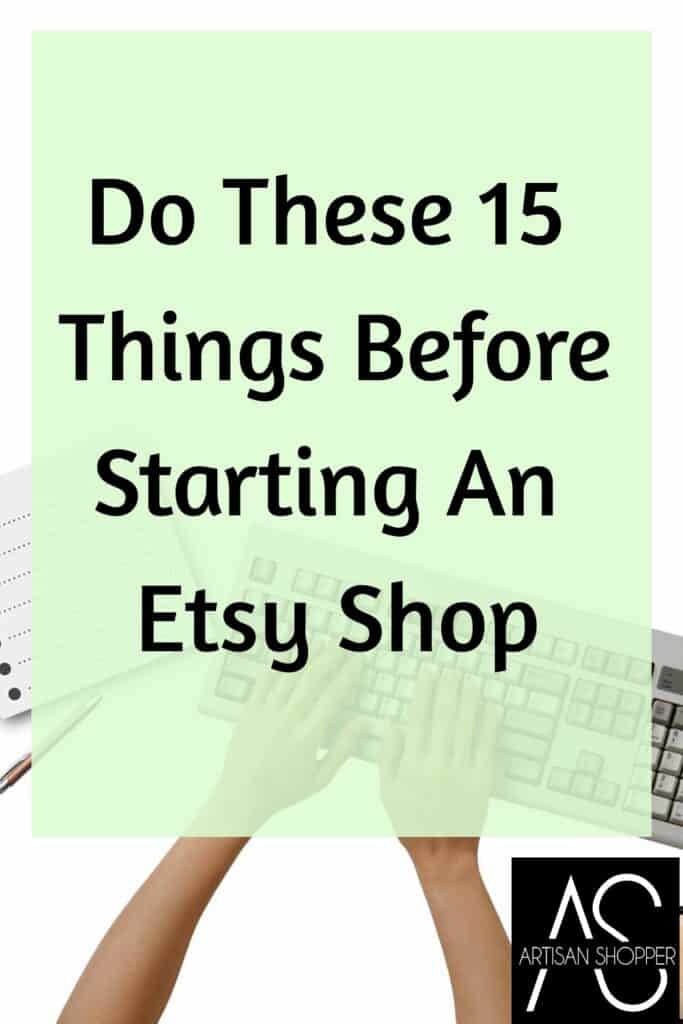
Table of Contents
- 1. Check the legal requirements for your location
- 2. Get registered and insured.
- 3. Understand the tax code.
- 4. Decide what you’re going to be selling.
- 5. Check that you can sell it on the platform you want to use.
- 6. Figure out your own costs and prices.
- 7. Look into the competition’s prices.
- 8. Choose a business name.
- 9. Register your url.
- 10. Get a business bank account and credit card.
- 11. Test out your shipping.
- 12. Get a grip on SEO.
- 13. Figure out how you’ll be promoting your shop.
- 14. Join my Etsy Facebook group.
- 15. Get this Etsy shop checklist.

1. Check the legal requirements for your location
The first thing to do when you want to start an ecommerce business is to check your local legal regulations to verify the legality of running a business from your home. While you don’t need a business license to sell things online on a lot of platforms, you may have to have one to run a business in your state or county. Laws vary between states and countries, so you will need to check with your local business office to clarify what your legal responsibilities are.
In my state, it’s required to register to collect sales tax, and to file a DBA or a business license before you sell anything.
Some locations are more lenient, but it’s important to sort out the legalities of running a business before you start selling anything.
In addition, you may need to check with your local laws to see if you are legally allowed to run a business from your home if you don’t intend to rent a commercial space.
Some cities don’t allow home-based businesses, and it can vary from city to city.
When I did wedding cakes, I worked from home, but the city 10 miles away from me didn’t allow home-based cake businesses.
The people I knew who lived there had to rent commercial kitchens to run their businesses.
You can check with the US Small Business Administration to see what licenses are required for your specific location here: Pick your business location
Even if you’re allowed by the state or city to run a home-based business, you might not be able to if you live somewhere that says that no businesses can be run from the premises.
If you have a homeowner’s association that has rules about this you’d better check!
Also, a lot of apartment buildings have clauses in the leases that say you can’t run a business from your apartment, so make sure to check.
This is all tied in with the liability for the property owner, and the possibility of having customers come to your apartment.
If you have no intention of having customers come to you, and you’re willing to buy renter’s insurance, you might be able to work something out with your landlord, but don’t be surprised if they say no. It’s worth checking on, though.
2. Get registered and insured.
You’ll need to be licensed with your state, but you might also want (or need) to register with your country’s tax authority.
If you don’t have employees, you may not need to register your business with the federal government, but you’ll still need to file income taxes for your business income.
Check with the IRS or with the tax authorities of your country to figure out what registrations you need to comply with.
If you do want to register to get a FEIN (Federal Employer Identification Number), you can go to IRS.gov to do that.
A FEIN is sometimes used instead of your Social Security number, so it’s good to have one even if you don’t have employees.
You’ll also need to look into getting business and liability insurance to cover you in case of a lawsuit. You can often get this through your homeowner’s or renter’s insurance.
There are also agencies that insure small businesses specifically, so shop around or ask other business owners who they use.
You may want to register your business as an LLC if you’re located in the U.S. This is a decision that’s best to make at the beginning of your business, since changing the legal structure of your business down the road will be annoying.
I started out as a sole proprietor, then I decided to change to an LLC about nine years after I started selling.
The process of switching over wasn’t difficult, but it was a lot of paperwork, and it was unnecessary extra work.
If I had set the LLC up at the beginning I wouldn’t have had to do business license, sales tax, and insurance registration paperwork twice.
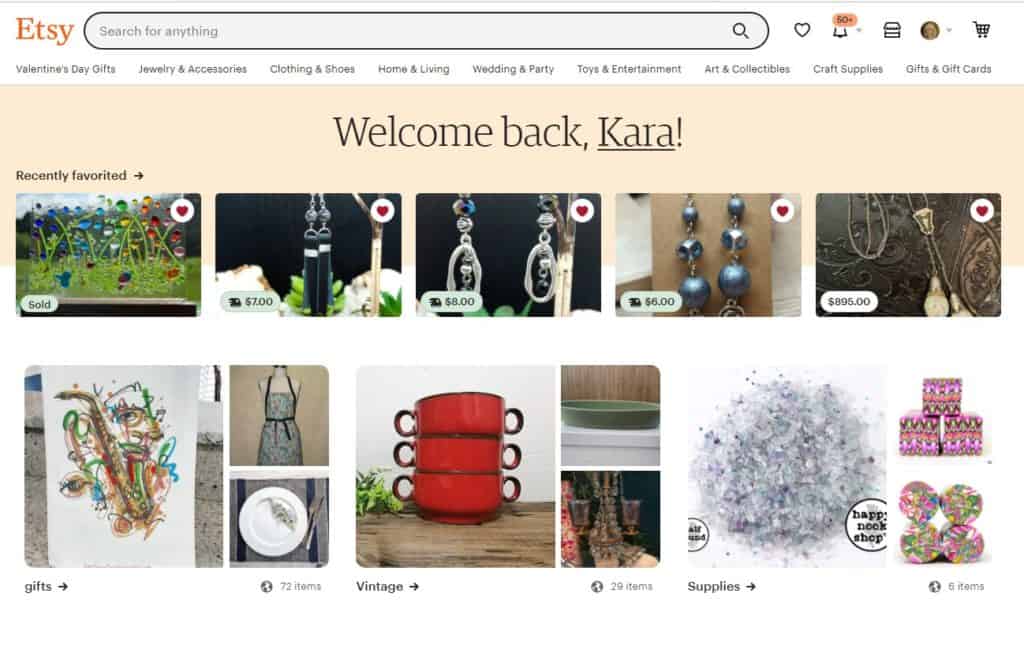
3. Understand the tax code.
When you sell products with the intention of making a profit, you’re running a business regardless of whether you make money or not. Everyone who runs a business is legally required to follow the tax laws, which includes declaring everything that you make when you sell products.
In the US (and probably in all countries,) the laws about reporting income are often misunderstood.
People throw around a lot of numbers when trying to prove that they don’t have to file income taxes on their business income, but those numbers aren’t usually accurate.
If you sell products, you need to report the income. You can also claim expenses on your income tax if you have a business, so you might not have to pay much tax on your business income during the first years when you’re not making as much money as you will later.
It’s important that you, as the business owner, take the time to understand all of your responsibilities before starting to sell anything.
If you ignore something like registering for sales tax with your state, the tax authorities aren’t going to be nice about it down the road.
Check with an accountant if you’re having trouble figuring out what you need to do for your taxes.
Check with your local government’s business office to find out what licenses and permits you need to file before you can operate legally.
4. Decide what you’re going to be selling.
Once all the legalities are in place, you can start to get down to the business of what you’re going to sell. You might already know what you want to build your business around, but it’s important to do some market research before you definitely settle on a product or a product line.
Start by determining the demand for your product by doing basic searches on the platform you’re thinking of selling on to see how many competing listings there are.
You can also check on Amazon and eBay, or any other marketplace, to get a general idea about how many people are selling what you want to sell.
You don’t want to see an extreme result either way. If there are too many competing listings, it’s probably going to be pretty hard to get your products seen.
If there aren’t any competing listings, or not very many, it could be that it’s something that nobody wants to buy.
However, it could also mean that it’s such a new, innovative thing, there just isn’t much of it available yet.
You might think that’s great news, and that you’ll corner the market, but the truth is that if people don’t know that your product exists, you might have to work harder to tell them about it.
This is a basic supply vs. demand problem.
It’s a balancing act between selling something that is in demand, but not something that has so much supply that customers have a huge number of choices.
One strategy is to find something that’s in demand, but then niche down so that your product is a little more specific so that it’s more in demand from a smaller audience.
When you do that, you’re probably going to have less competition, so it might be easier to sell to the smaller group.
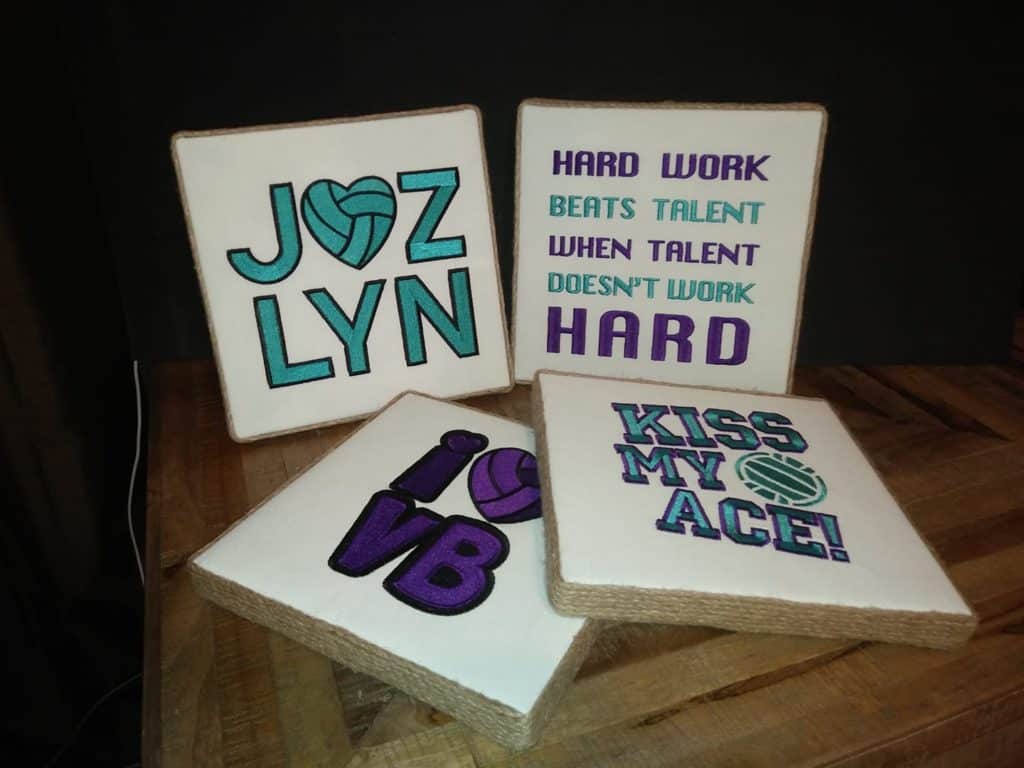
5. Check that you can sell it on the platform you want to use.
Every marketplace will have different rules about what you can sell on it.
The Etsy marketplace allows craft supplies, vintage items, and handmade items on the platform. If your products don’t fall within the parameters of Etsy’s guidelines, you can’t sell it. Some things that are specifically prohibited from being sold on Etsy are items that are purchased from a wholesaler or manufacturer then resold.
Goimagine only allows handmade items, noreselling supplies or vintage, and there are no AI images allowed at all.
Every marketplace has different rules that you’ll need to follow. If you want to make your own rules, you can start your own website, but then you’ll have to think about if you’ll need to collect sales tax, plus other legalities that the platforms handle for you.
If you sell things that aren’t allowed, you’ll run the risk of having your shop shut down, so make sure to check to see what things are allowed and what’s prohibited before you set up shop.
6. Figure out your own costs and prices.
Determining the cost of your products is the basis for making a profit. In order to run a profitable business, you need to know your numbers and understand what you need to charge. Before selling anything you need to know how to price your products correctly.
One way to do that is to get my pricing guide, which will walk you through the entire process of figuring out exactly what needs to go into the price of your products.
You can get my Pricing Guide here: Pricing Guide for Etsy Sellers
It’s not as easy as figuring out the cost of your materials and multiplying that number by 3 or 4. If you do that, chances are you’ll end up working for less than minimum wage.
All of your costs should be included in the price of your products, so you need to figure out not only the cost of your materials, but also the cost of your insurance, equipment, shipping, etc.
Everything that you pay out as a result of being in business should be included in the cost of your products so that you cover all of your expenses.
You’ll also need to include a margin so that you can offer discounts or run sales without worrying about losing too much money.
On top of that, you’ll need to add in platform and credit card processing fees, which can add up and take a chunk of your money if you don’t plan for it.
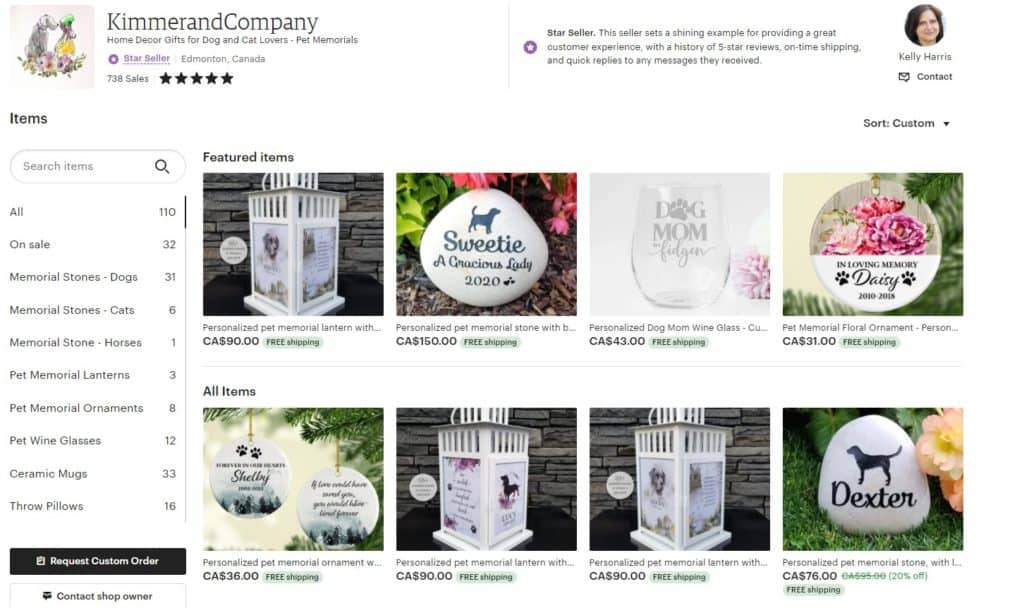
7. Look into the competition’s prices.
Once you know what you want to sell and what your prices need to be, you can THEN get specific about the competition. Looking at other people’s shops can tell you if your prices are competitive, or if they’re too high or too low. You shouldn’t look at competitiors’ prices until you have a good idea about what yours should be, or you might be biased and set yours too low to compete.
If your competition seems to be pricing things a lot higher than your items, you can raise your prices so that you’re in line with the market.
If you find that your prices are a lot higher than everyone else, it might be necessary to reevaluate whether your products are competitive, and whether it’s worth it to you to make them.
There are a lot of products where people underprice things to try to be the lowest-priced item, but that’s not a good approach.
Customers who only buy based on the cheapest price won’t be your loyal customers when it’s time to raise your prices.
A lot of new business owners think that they need to undercharge at first because they’re new, so they shouldn’t charge what they should be charging.
But if you think that your products are good enough to sell, then you should charge the right price for them.
In general, you should have your prices set at least in the mid-range of the prices in your category, and it’s better to have them set on the higher side.
8. Choose a business name.
If you don’t have a business name yet, this is the time to do that. If you know what you’ll be selling you can choose a name that reflects that, but it’s generally better to choose a name that’s less specific. That way, you can change your products without having to change the business name.
You’ll also need to check to see if the business name is registered for a trademark or copyright in the country that you’re located in.
If it is, you should use a different name! Go to USPTO for trademark searches and the US copyright office
for trademark searches and the US copyright office for US copyright searches.
for US copyright searches.
You’ll also want to check on Etsy or whatever platform you want to use to see whether the name is available.
Once a name is used once by either a shop owner or a buyer on Etsy, the name is never available again, even if that shop shuts down.
The easiest way to see if the name you want to use is available is to go to Google and search for it. If any businesses are already using the name, they will come up.
It’s important to check to make sure that the name that you want to use is available on the platform, but it’s also important to make sure that the name is available online as a url for a website and social media accounts.
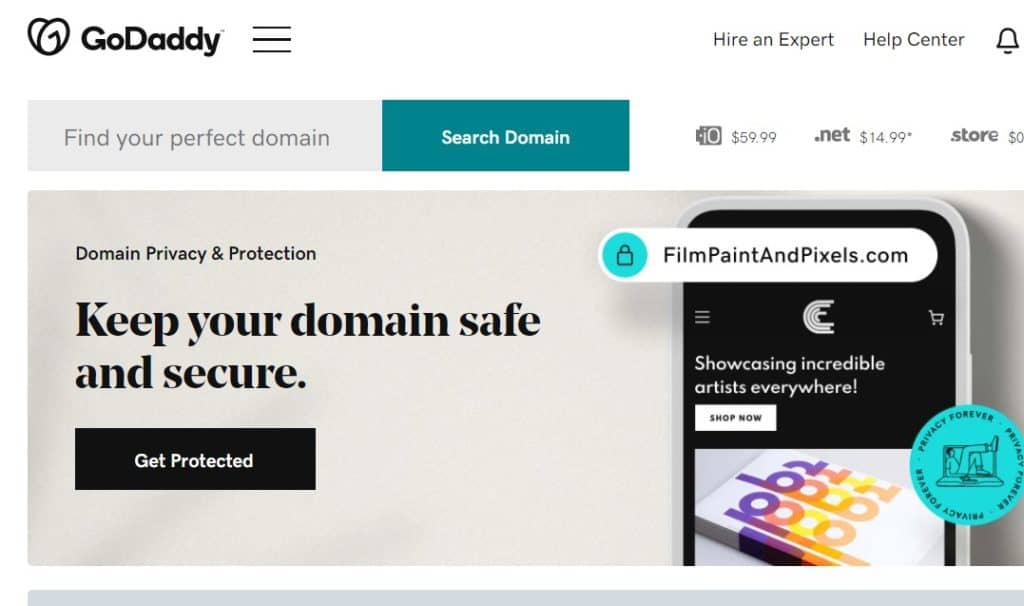
9. Register your url.
Once you have a business name that’s available, you need to register the domain name so that you’ll own the url and you’ll have it to use later if you want to. You can also point the url to your Etsy shop, so that if someone types the “your business name”.com into the search bar, your Etsy shop will come up.
Registering a url is basically a safeguard to prevent other people from using a web address with your business name.
To register a url, you can use any web registrar, like GoDaddy . There will be directions on each registrar’s site to buy the domain name, so I won’t go into it here.
. There will be directions on each registrar’s site to buy the domain name, so I won’t go into it here.
Believe me when I say that it is REALLY important to register your domain name.
It’s not illegal to register a domain name without owning the business, so someone could come along and register your business name and use it to send people to their website!
10. Get a business bank account and credit card.
When you definitely know your business name, you have everything registered and you have your business license and it’s all set up, it’s time to get a business bank account. A business bank account lets you keep your business and personal funds separate, which is important for bookkeeping.
It’s also legally required that you keep your funds separate if you have specific types of business structures, so a business bank account is important for a lot of reasons.
You’ll be very surprised at how much easier it is to manage your business money when you don’t have it combined with your personal funds.

11. Test out your shipping.
Before shipping products to customers, you need to verify that your shipping methods and packaging are appropriate. By sending a few test packages to people who you know who live far away you’ll be able to make sure that your packaging is good enough.
If it turns out that your products were damaged en route, you should look at whether your shipping supplies are good enough to protect them.
There will be occasional accidents, but if the first few packages that you sent your products in didn’t protect them, you’ll need to make adjustments.
When I started out I tested out different products with different types of packaging until I found the one that worked best to protect the items in transit.
I always say that if I can’t take the package and kick it across the parking lot at the post office without worrying about something being broken, then I need to go pack it better.
12. Get a grip on SEO.
SEO stands for search Engine Optimization” and is the process of making sure that the search engine can read and understand your listings. It’s integral to getting your listings seen by customers in when they search for something.
Before you start selling online you need to have at least a basic understanding of SEO and how it works differently for each platform you’ll be using.
I have a lot of videos on my youtube channel about Etsy SEO, you can find those here: Youtube.com/karabuntin

13. Figure out how you’ll be promoting your shop.
You’ll need to promote your shop in order to get attention and visitors, so plan on how you want to do that. The main ways are advertising and social media, and which one you choose is basically going to be a time vs money decision.
If you don’t want to spend too much money, you can focus on using social media. That’s free, obviously, but it does take a lot of time if you want to get a lot of engagement.
If you already have a lot of followers on different platforms, you’ll be ahead of the game, and you can use those connections.
If you don’t, you’ll have to build your audience, and you might feel like nobody is seeing your posts for quite a while.
Choose one platform to start with, and base that on where you think your customers are hanging out online.
I would suggest getting a Pinterest account started regardless of what other platforms you decide to use. Pinterest is less social media and more search engine, so it’s worth getting started on there so that you have time to build your traffic.
If you prefer to use some ads, you can run ads to basically buy visibility for your listings. Watch your budget carefully, though, because it’s easy to spend too much without getting a good return.
14. Join my Etsy Facebook group.
When you get your online shop set up and have some products listed, the next step would be to find some other online sellers to learn from.
I may be a little biased, but my Etsy and home-based business group is an excellent choice, especially for new sellers.
We try to keep the atmosphere in the group positive, and there are strict rules about promotion and linking out (you can’t put any links in posts at all,) so it’s not a group that people try to use to spam each other.
You can apply to join AFTER your shop is open by clicking here: Home-Based Business and Etsy Sellers
15. Get this Etsy shop checklist.
To get an Etsy shop checklist that will help you to refine your Etsy shop’s structure, download my Etsy ehecklist here:
Going through a basic checklist will help you to make sure that you’ve covered all the bases structurally for your shop, because it’s easy to miss something when you’re just starting out.
Some of the sections on Etsy also count toward search placement a little, so you don’t want to not fill something out that can help you be found higher in search.
Starting to sell online can be exciting but also scary. Don’t stress out too much, it’s a lot of paperwork and setting things up the right way when you’re just starting out, but once all that is in place the rest just becomes figuring out the system and trying to market your business!

